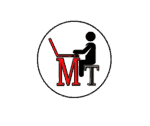-
Course Overview 0
No items in this section -
Set Theory 6
-
Set Theory | Part 1 | 10 minLecture2.1
-
Set Theory | Part 2 | 08 minLecture2.2
-
Set Theory | Part 3 | 07 minLecture2.3
-
Set Theory | Part 4 | 10 minLecture2.4
-
Set theory | Part 5 | 10 minLecture2.5
-
Inclusion-Exclusion Principle 18 minLecture2.6
-
-
Logic 7
-
Laws Of Logic With Solved Example 10 minLecture3.1
-
Logical Equivalence with Solved Examples 12 minLecture3.2
-
Statement forms Tautology Contradiction and Contingency | Part 1 | 07 minLecture3.3
-
Statement forms Tautology Contradiction and Contingency | Part 2 | 10 minLecture3.4
-
Mathematical Induction | Part 01 | 08 minLecture3.5
-
Mathematical Induction | Part 02 | 12 minLecture3.6
-
Logical Statements and Symbolization with Example 11 minLecture3.7
-
-
Relations & Functions 5
-
Warshall Algorithm 10 minLecture4.1
-
Hasse Diagram and Posets 11 minLecture4.2
-
Lattices and Posets 14 minLecture4.3
-
Converse Inverse and Contrapositive 10 minLecture4.4
-
Pigeonhole and Extended Pigeonhole Principle 08 minLecture4.5
-
-
Counting 1
-
Recurrence Relation Using Iteration 09 minLecture5.1
-
-
Trees & Graphs 4
-
Kruskal’s Minimal spanning Tree 09 minLecture6.1
-
Prim’s and Dijkstra’s Minimal spanning Tree 10 minLecture6.2
-
Group Code Using Parity Matrix 10 minLecture6.3
-
Welch-Powell Graph Coloring 09 minLecture6.4
-
-
DSGT Notes 6
-
LogicLecture7.1
-
Relations and FunctionsLecture7.2
-
Posets and LatticeLecture7.3
-
CountingLecture7.4
-
Algebraic StructuresLecture7.5
-
Graph TheoryLecture7.6
-
-
Discrete Structures and Graph Theory Viva Question 6
-
Basic Concepts in ProbabilityLecture8.1
-
Relations and FunctionsLecture8.2
-
Posets and LatticeLecture8.3
-
CountingLecture8.4
-
Algebraic StructuresLecture8.5
-
Graph TheoryLecture8.6
-
Set Theory | Part 3 |
Set Theory | Part 3 |
Set theory is the mathematical theory of well-determined collections, called sets, of objects that are called members, or elements, of the set. The axioms of set theory imply the existence of a set-theoretic universe so rich that all mathematical objects can be construed assets. In naive set theory, a set is a collection of objects (called members or elements) that is regarded as being a single object. A set A is called a subset of a set B (symbolized by A ⊆ B) if all the members of A are also members of B. For example, any set is a subset of itself, and Ø is a subset of any set.
Prepare For Your Placements: https://lastmomenttuitions.com/courses/placement-preparation/
![]()
/ Youtube Channel: https://www.youtube.com/channel/UCGFNZxMqKLsqWERX_N2f08Q
Follow For Latest Updates, Study Tips & More Content!
Leave A Reply Cancel reply
You must be logged in to post a comment.


5 Comments
Discrete maths ke Sab topic pe lectures nahi hai kya
Wonderfull, and helpfull.
Thanks a lot!!!!!!!!!!!!!!!!
Thanku
So much🌸🌸
Explained very well…. thanks for your lecture
Thankyou for sharing 💓💓💝